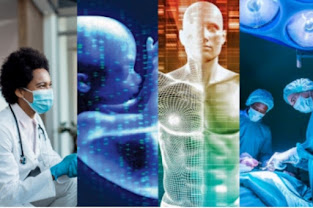Spermatozoan 👇🏻
" SPERMATOGOAN "
Definition :- A spermatozoan is a haploid male gamete whose primary function is to fuse with ovum to restore diploidy and to transmit paternal characters to the offsprings.
Structure :- A mammalian sperm is minute, microscopic, flagellated and motile gamete with no nutritive material, protective envelopes and most of cell-organelles like ribosome, endoplasmic reticulum, etc. The whole body of sperm is enveloped by plasma membrane only. It is basically formed of four parts, each performing a specific function
1. Head :- Shape of head varies in different mammals. It is generally oval and flat (in man, bull, rabbit). Basically the head is formed of two parts
Acrosome (Gr. akron extremity; soma=bodybuilder ):-- It is small cap-like pointed structure present at the tip of nucleus. It is formed from a part of Golgi body of spermatid. During the sperm entry, the acrosome secretes a lytic enzyme, called hyaluronidase) which helps in the penetration of ovum.
Nucleus.:-It is generally long, narrow and pointed but is flat and oval in human sperm. It is formed by condensation of nuclear chromatin of spermatid and loss of RNA, nucleolus and acidic proteins. Chemically, the nucleus is formed of deoxyribonucleoprotein (DNA basic proteins). It is the carrier of genetic information.
3. Middle piece.:-- It lies behind the neck and is cylindrical in the human sperm. It is formed of a mitochondrial spiral. nebenkern, around the proximal part of axoneme. The mitochondria are the carriers of the oxidative enzymes and the enzymes which are responsible for oxidative phosphorylation. So the middle piece is the power house of a sperm. Posterior half of nucleus, neck and middle wed by a sheath manchette:
2. Neck. It is the smallest part of spermatozoan and may be indistinct. It is formed of two centrioles perpendicular to each other and is formed from the centrosome of spermatid. Each centriole is a microtubular triplet structure having 9+ 0 arrangement. Proximal centriole lies in a depression in the posterior surface of the nucleus and is perpendicular to main axis of the sperm. Distal centriole is along longitudinal axis of the sperm.
3.Tail :-- It is the longest part of sperm. It is slender and tapering part. It is formed of two parts central, contractile and microtubular part called axoneme or axial filament, and outer protoplasmic sheath. Axoneme is formed of 11 proteinous microtubules arranged in 9+2 manner.
Sometimes, a ring centriole may be present at the junction of middle piece and
flagellum. Tail shows lashing movement's
which provide forward push to the sperm.
( Note):-👇🏻👇🏻
!! * There may be an explanation as to the results of other biology results, you can search the website and see.
--𝒜𝓂𝒶𝓃...
Aʟʟ ᴛʜᴇ ʙᴇsᴛ 😊Tʜᴀɴᴋ ғᴏʀ Yᴏᴜ 🙏🏻 !!
(



Comments
Post a Comment